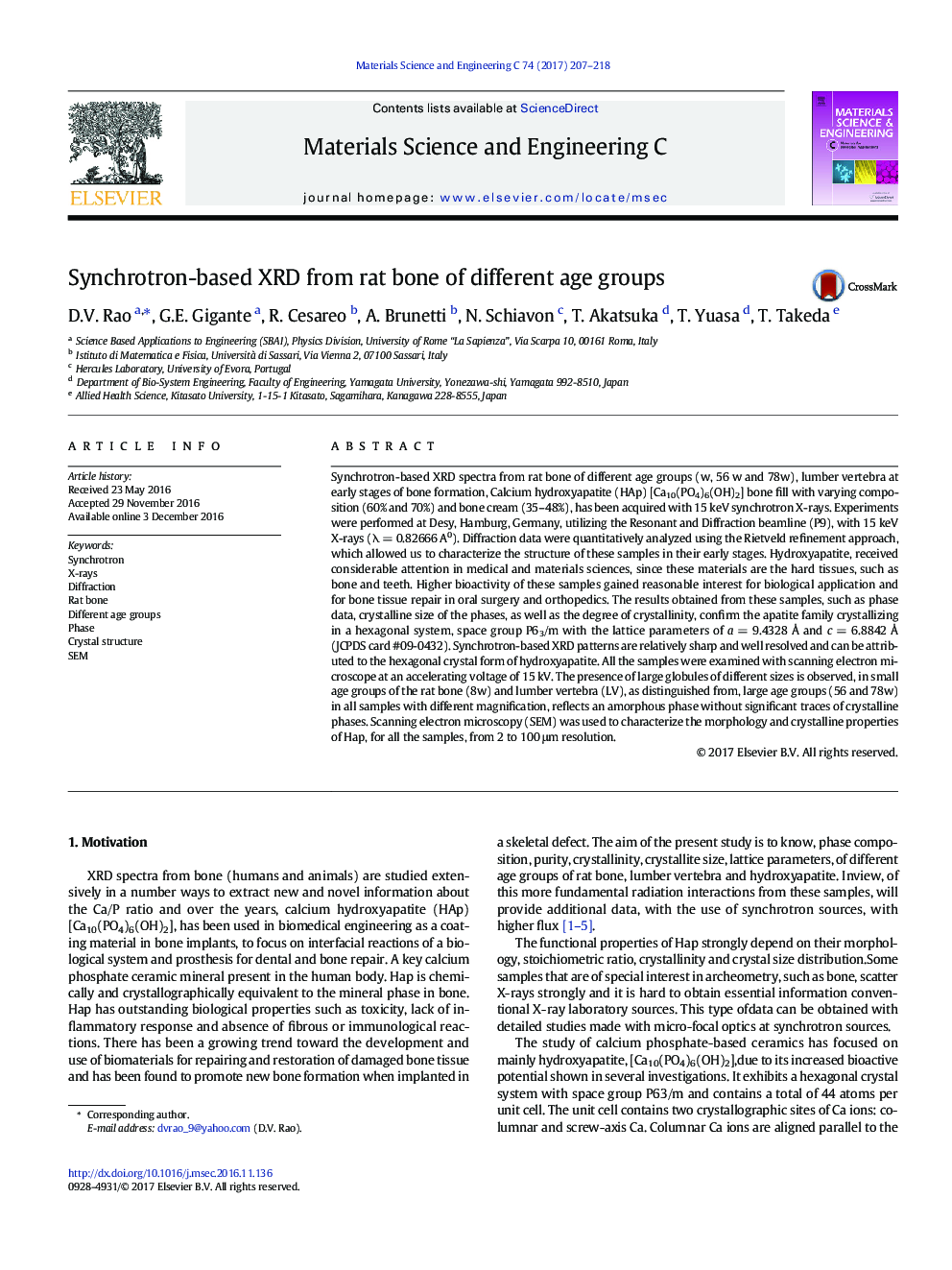| کد مقاله | کد نشریه | سال انتشار | مقاله انگلیسی | نسخه تمام متن |
|---|---|---|---|---|
| 5435022 | 1509147 | 2017 | 12 صفحه PDF | دانلود رایگان |

- For a given animal age and degree of mineralization, crystallinity increases with animal age.
- A high crystallinity in the low-to-medium density, presumably younger bone (8w); a lower crystallinity (56w); and a higher crystallinity (78w).
- Our research is focused to explore the importance of these materials at the nano-level scale.
Synchrotron-based XRD spectra from rat bone of different age groups (w, 56 w and 78w), lumber vertebra at early stages of bone formation, Calcium hydroxyapatite (HAp) [Ca10(PO4)6(OH)2] bone fill with varying composition (60% and 70%) and bone cream (35-48%), has been acquired with 15 keV synchrotron X-rays. Experiments were performed at Desy, Hamburg, Germany, utilizing the Resonant and Diffraction beamline (P9), with 15 keV X-rays (λ = 0.82666 A0). Diffraction data were quantitatively analyzed using the Rietveld refinement approach, which allowed us to characterize the structure of these samples in their early stages. Hydroxyapatite, received considerable attention in medical and materials sciences, since these materials are the hard tissues, such as bone and teeth. Higher bioactivity of these samples gained reasonable interest for biological application and for bone tissue repair in oral surgery and orthopedics. The results obtained from these samples, such as phase data, crystalline size of the phases, as well as the degree of crystallinity, confirm the apatite family crystallizing in a hexagonal system, space group P63/m with the lattice parameters of a = 9.4328 à and c = 6.8842 à (JCPDS card #09-0432). Synchrotron-based XRD patterns are relatively sharp and well resolved and can be attributed to the hexagonal crystal form of hydroxyapatite. All the samples were examined with scanning electron microscope at an accelerating voltage of 15 kV. The presence of large globules of different sizes is observed, in small age groups of the rat bone (8w) and lumber vertebra (LV), as distinguished from, large age groups (56 and 78w) in all samples with different magnification, reflects an amorphous phase without significant traces of crystalline phases. Scanning electron microscopy (SEM) was used to characterize the morphology and crystalline properties of Hap, for all the samples, from 2 to 100 μm resolution.
Journal: Materials Science and Engineering: C - Volume 74, 1 May 2017, Pages 207-218